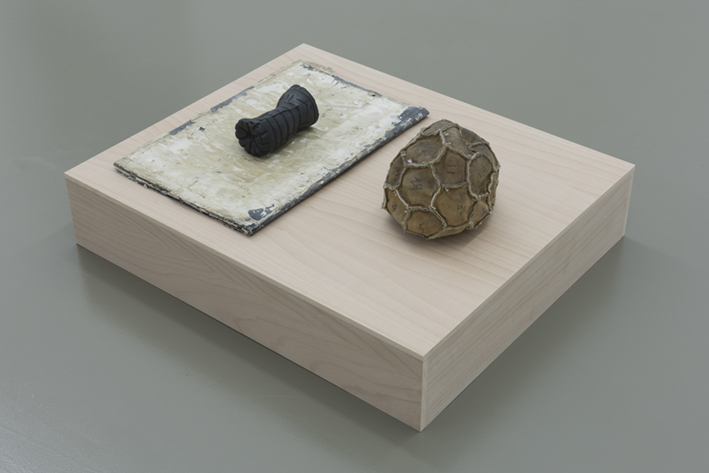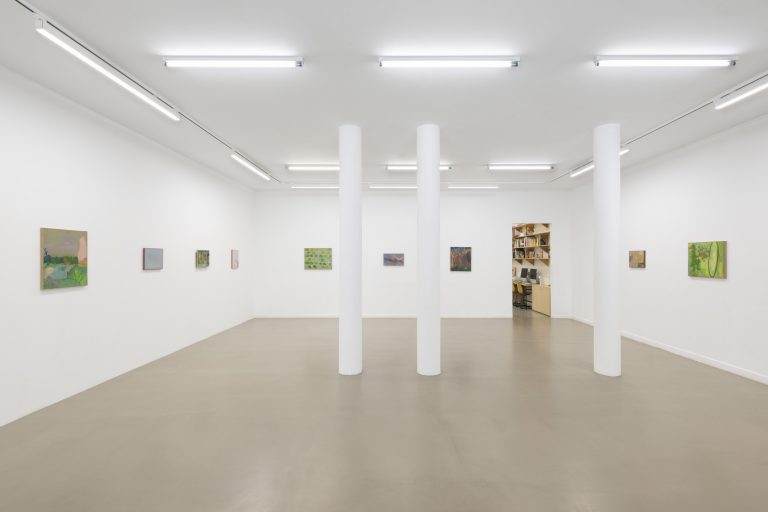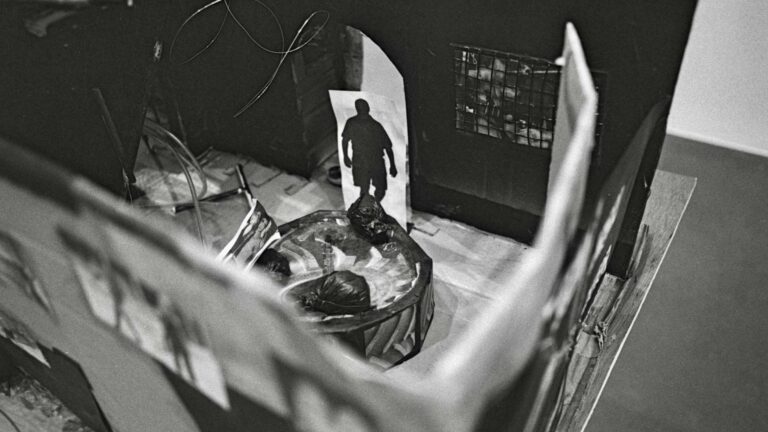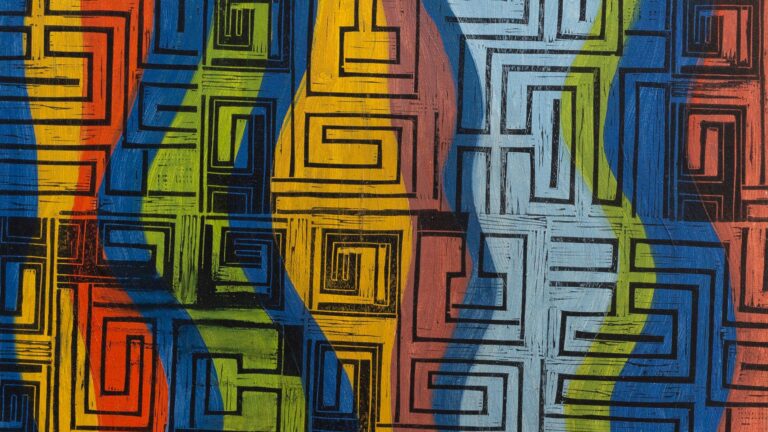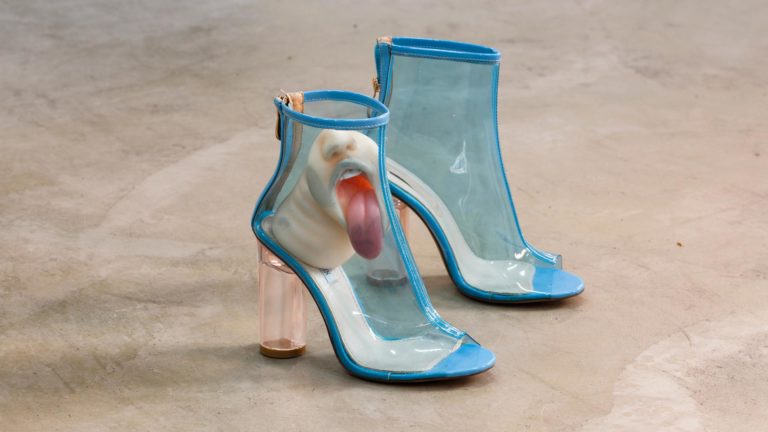From 14 March to 10 May, CarrerasMugica is presenting ÉL Y LLO (La Lengua Obesa), Ignacio Sáez’s second solo show at the gallery following his first in 2008. It consists of around thirty paintings that occupy the whole of the gallery’s exhibition space. Begun between 2000 and 2013, he returned to some of them in 2023 and concluded them this year. The project is, as such, a personal rereading of pre-existing works going against the grain of the exhibitions we have come to expect from the painter. As an integral part of the project and simultaneously with the exhibition, the book El curador, a fiction penned by Txomin Badiola, also responsible for selecting and organizing the exhibition, will be published by Caniche Editorial.
HE AND LLO (La Lengua Obesa)
A number of years ago, Ignacio Sáez took a group of works he believed at the time to be little more than discards and locked them away in a commercial unit in Igorre owned by a friend*, where they remained until recently when they were spotted by a couple of people from the Museo de Bellas Artes de Bilbao** who happened to be there for other reasons. Following on from this discovery, an exhibition based on those works was proposed which ultimately has been hosted by the CarrerasMugica gallery.
When I was given access to the set of works in question, notwithstanding how disparate they were and the disorderly way in which they were revealed to me, my initial impression was that they formed a coherent whole regardless of the randomness that had brought them together. And what lent them this coherence was the artist’s steadfast disposition to become both subject and object of a complex process of destruction and reconstruction: Tormented by an inner demon (nothing less than a metaphor for the most extreme and irreconcilable drives of a psychic and biological organism always at odds with the world), the painter explores the labyrinthine structures of language, letting himself be buffeted by them, and fighting from within to gain some kind of mastery by redefining the elements and relationships that constitute them. This circumstance, concerning the artist’s performativity in relation to himself, the world and language, which gives rise to the works, will also ultimately be reflected as their thematic core. And so, the (painter’s) body deformed by hyperplasia and elongated appendages will be fragmented and its parts will undergo extreme transformations and develop new organs; it will metamorphose into animals or parts of them, change sex, only to reintegrate and emerge as a newly imagined body, made from pulsating, embodied linguistic signs with which to attempt some kind of reconciliation. It is his very subjectivity that is put to the test in his painting, which gives the work a megalomaniacal quality owing to the omnipresence of signs in the paintings that allude to himself; yet, it is a quality that is also vulnerable and precarious because of all the trials he is put through. In this sense, one could speak of the epic nature of this set of works, where the hero-antihero (the artist himself) carries out his small and not-so-small exploits (also peppered with failure) against superior entities (the rigid cages of representation) that decide his fate as a desiring body.
The self, the painter’s self, that appears in his painting is indistinguishable from the idea of the Other. This is true whether it be a reflection returned by the mirror (in the various representations of himself) or an alter ego emerging from the fragmented and multiple self, recomposed in a character (that Ignacio calls La Lengua Obesa, or the obese tongue) with highly defined features (deformed Negroid face, big appendages in the skull, wearing oversized boots and a kind of diaper where other objects seem to accumulate) that both give him and deprive him of an identity, given the fraught reconciliation of the disparate signs. Besides himself and this character (the painter’s monstrous Other), there is also a group of paintings focused on the (almost impossible) capture of a real, affective, sentimental Other: the woman of his intermittent yet constant affections (to whom he always returns).
Painting is the place where everything happens and also the place where the interaction between the practitioner’s body and the body of space takes place. These places unfold within the polarity of the closed and the open, of enclosing oneself and opening up. There are places, proper to an artist’s activity (studio, warehouse, gallery, museum), where he encloses himself, becoming one with them, confronting their often treacherous implications, in order to emerge as a new reality made of material signs, suffused with the instinctual cataclysms of a nervous system put to the test. On the other hand, there are realms in which he opens up (the body becomes that of the landscape), places of escape and of encounter with a raison d’être beyond language, which, nonetheless, are revealed as illusory realities, just as subjected to representation as everything else, only grasped through an exercise of defamiliarization that restores the strangeness inherent to the real.
And this entire programme of subjectivation through painting, of negotiations with alterity, of comings and goings to the places of representation and their real fissures, will be governed by the big black hole of non-being, of nothingness and of death; by the resigned acceptance that one is working in the void of longing and tiny conquests, which will never stop reminding you that “all is vanity” (the painting becomes a vanitas), without the artist ever fully accepting it, given that it is against this very awareness of mortality that art is activated.
When, not without some reluctance at first, Ignacio Sáez accepted the conditions of this exhibition (the main one being that he had to include the paintings he had initially discarded in Igorre), I, in my role as a circumstantial curator (inclined to respect the initial intuition of the narrative that imposed itself on me when I first saw these paintings, and to base the organization of the exhibition on it) accepted that Ignacio, in the span of a little more than a year between the commission and the opening, could transform them as he pleased, even to the point of producing (as has happened in more than a few cases) a radical misalignment between the initial approach and the current works; a misalignment that must rightfully manifest itself as a wound or scar, forming an essential part of the experience.
Feeling little inclined toward the tasks normally assigned to the role of curator, and given the nature of the project I was undertaking with Ignacio and the previously mentioned circumstance, I decided that my contribution to the exhibition of the visual works would take the form of a book called EL CURADOR (The Curator). An exercise in writing that necessarily had to take the form of fiction in order to address the matters at stake in this relationship in the most honest way possible to my way of thinking. It goes without saying that these are two independent forms (the visual works and the literary text) fated to coexist, without either serving as a justification or explanation for the other. Only through their simultaneous existence within the project will it be possible to derive the conclusions each person wishes or needs to extract.
–Txomin Badiola, March 2025
*Ignacio Elexpe
**Miguel Zugaza and Gilermo Zuaznabar
Ignacio Sáez (Bilbao, 1971). Graduated in Fine Arts from the UPV (University of the Basque Country), he has completed his training through the participation in different scholarships such as Bilbaoarte, 2005 and 2002, Juan de Otaola y Pérez de Saracho, 2003, the plastic arts scholarship of the Provincial Council of Bizkaia, 1997 or the creation scholarship of the BBK Foundation, 1995. Some of his latest exhibitions are Ella dice (Museo Artium, Vitoria, 2005), Galería Ventana 244 (Brooklyn, NY, 2011), Cohibido a los 20 (Bulegoa, Bilbao, 2020) and BBKateak Van Dyck-Sáez (Museo de Bellas Artes, Bilbao, 2022).













































